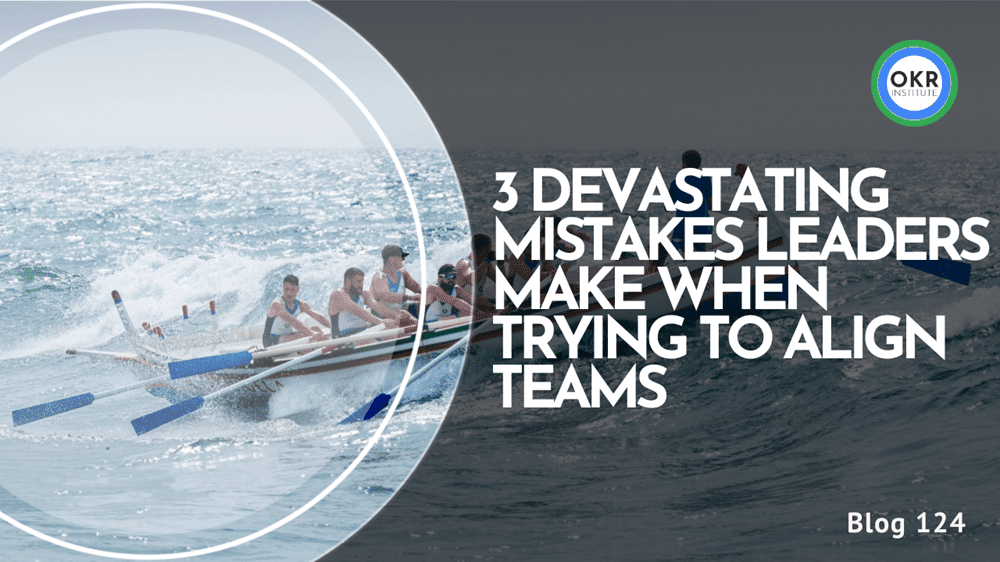Meeting Sky High Expectations: How OKRs Help Businesses Soar Beyond Customer Demands

Evolving Customer Expectations: A Paradigm Shift
The business landscape has undergone a seismic shift, with customer expectations evolving at an unprecedented pace. Gone are the days when customers were content with basic products and services; today’s customers demand a personalized, seamless, and exceptional experience across all touchpoints.
This transformation can be attributed to several factors, including the rise of digital technologies, increased competition, and shifting consumer behavior. Customers now have access to a wealth of information, enabling them to make informed decisions and demand more from businesses. They expect companies to anticipate their needs, provide tailored solutions, and deliver a consistent and delightful experience across all channels.
Moreover, the proliferation of social media and online review platforms has empowered customers to share their experiences, both positive and negative, with a vast audience. This transparency has raised the bar for businesses, as a single misstep can quickly tarnish a brand’s reputation and erode customer loyalty.
In this rapidly changing environment, companies must adapt swiftly to meet and exceed evolving customer expectations. Failure to do so can result in lost market share, diminished brand equity, and ultimately, decreased profitability.
The Perils of Unmet Customer Expectations
Failing to meet customer expectations can have severe consequences for businesses. In today’s highly competitive landscape, customers have an abundance of choices, and they won’t hesitate to take their business elsewhere if their needs are not met.
One of the most significant risks of unmet expectations is the potential loss of business. Dissatisfied customers are more likely to switch to competitors who can better cater to their needs. This can result in a significant decline in revenue and market share, making it challenging for the business to sustain itself in the long run.
Furthermore, a company’s reputation is closely tied to the level of customer satisfaction it provides. Negative word-of-mouth and online reviews can spread rapidly, damaging the brand’s image and making it harder to attract new customers. A tarnished reputation can take years to rebuild, and the cost of regaining consumer trust can be substantial.
Reduced customer loyalty is another consequence of unmet expectations. Loyal customers are the backbone of any successful business, as they not only provide a steady stream of revenue but also serve as brand ambassadors, recommending the company’s products or services to others. However, if a business consistently fails to meet their expectations, these loyal customers may start exploring other options, leading to a decline in repeat business and increased customer acquisition costs.
Understanding Customer Expectations
Identifying and understanding customer expectations is crucial for businesses to deliver exceptional service and stay ahead of the competition. There are various methods that companies can employ to gain insights into what their customers truly desire.
One effective approach is conducting customer surveys. Well-designed surveys can provide valuable feedback on customer satisfaction levels, pain points, and areas for improvement. By asking the right questions and offering multiple-choice, rating scales, and open-ended responses, businesses can gather quantitative and qualitative data to better understand customer needs.
Focus groups are another powerful tool for uncovering customer expectations. These moderated group discussions allow companies to delve deeper into the motivations, preferences, and frustrations of their target audience. Focus groups provide a platform for customers to share their experiences, opinions, and ideas in a more interactive and dynamic setting.
Data analysis also plays a vital role in understanding customer expectations. By leveraging customer data from various sources, such as purchase history, website analytics, social media interactions, and customer support logs, businesses can identify patterns, trends, and preferences. Advanced analytics techniques, like predictive modeling and sentiment analysis, can help companies anticipate customer needs and tailor their offerings accordingly.
Moreover, businesses should actively monitor industry trends, competitor offerings, and customer reviews to stay informed about evolving customer expectations. Regularly engaging with customers through multiple channels, such as social media, customer forums, and feedback surveys, can provide valuable insights into their changing needs and preferences.
By employing a combination of these methods, companies can gain a comprehensive understanding of customer expectations, enabling them to make informed decisions, optimize their products and services, and ultimately deliver exceptional customer experiences.
Introducing OKRs: A Framework for Aligning Customer-Centric Goals
OKRs, or Objectives and Key Results, is a powerful goal-setting framework that can help organizations align their efforts towards meeting and exceeding customer expectations. This approach involves setting ambitious yet achievable objectives and defining measurable key results that indicate progress towards those objectives.
By adopting OKRs, companies can ensure that customer satisfaction remains a top priority across all departments and levels. OKRs enable organizations to translate their customer-centric vision into actionable goals and metrics, fostering a culture of accountability and continuous improvement.
One of the key advantages of OKRs is their ability to promote transparency and cross-functional collaboration. By sharing objectives and key results openly, teams can better understand how their individual contributions impact the overall customer experience. This alignment helps break down silos and encourages a shared sense of ownership in delivering exceptional service.
Moreover, OKRs provide a structured way to track and measure progress towards customer-related goals. By regularly reviewing and adjusting key results, organizations can quickly identify areas for improvement and adapt their strategies accordingly. This agility allows businesses to respond promptly to changing customer needs and market dynamics, ensuring they remain competitive and customer-focused.
Crafting Customer-Centric OKRs
To craft OKRs that prioritize customer satisfaction and experience, businesses should focus on measurable objectives that directly impact the customer journey. Here are some examples:
Objective: Improve customer satisfaction scores
- Key Result: Increase Net Promoter Score (NPS) from X to Y by the end of the quarter
- Key Result: Reduce negative reviews on popular review platforms by Z%
Objective: Enhance customer support experience
- Key Result: Decrease average response time for support tickets from X hours to Y hours
- Key Result: Increase percentage of support tickets resolved on first contact from X% to Y%
Objective: Streamline customer onboarding process
- Key Result: Reduce average time to first value (TTFV) for new customers from X days to Y days
- Key Result: Increase activation rate (percentage of new users who complete core actions) from X% to Y%
By setting clear, measurable objectives and key results around customer experience metrics, businesses can align their efforts and resources towards delivering exceptional customer satisfaction. Regular progress tracking and adjustments ensure continuous improvement in meeting and exceeding customer expectations.
Aligning OKRs for a Cohesive Customer-Centric Strategy
To meet and exceed customer expectations consistently, businesses must foster a culture of customer-centricity across all departments and teams. Aligning Objectives and Key Results (OKRs) is crucial in achieving this cohesion. By setting shared OKRs that prioritize customer satisfaction, companies can ensure that every team, from product development to customer service, is working towards the same goals.
Collaborative OKR-setting allows teams to understand how their individual efforts contribute to the overarching customer experience. For instance, the product team’s OKRs may focus on developing user-friendly features, while the marketing team’s OKRs could revolve around effectively communicating those features to potential customers. Simultaneously, the customer service team’s OKRs might concentrate on providing prompt and personalized support.
This cross-functional alignment enables teams to work in sync, minimizing silos and ensuring a seamless customer journey. When all departments share a customer-centric vision, it becomes easier to identify and address pain points, anticipate customer needs, and consistently deliver exceptional experiences.
Moreover, regularly reviewing and adjusting OKRs based on customer feedback and market trends allows businesses to remain agile and responsive. This iterative approach fosters a culture of continuous improvement, enabling companies to stay ahead of evolving customer expectations and maintain a competitive edge.
Measuring and Monitoring Customer Satisfaction with OKRs
Gauging customer satisfaction is paramount for businesses to understand if they are meeting or exceeding customer expectations. By incorporating customer satisfaction metrics into Objectives and Key Results (OKRs), companies can align their efforts towards delivering an exceptional customer experience.
One effective approach is to leverage customer satisfaction surveys or feedback mechanisms to gather quantitative data. This data can then be translated into measurable Key Results within an OKR framework. For instance, an Objective could be “Improve Customer Satisfaction,” with Key Results such as “Achieve an average customer satisfaction score of 4.5/5” or “Increase positive customer reviews by 20%.”
Qualitative feedback from customers should also be analyzed to identify areas for improvement and potential new features or services. This feedback can inform the creation of OKRs aimed at addressing specific customer pain points or enhancing particular aspects of the customer journey.
Furthermore, businesses can track metrics like customer retention rates, churn rates, and customer lifetime value as Key Results within OKRs focused on customer loyalty and engagement. By monitoring these metrics closely, companies can quickly identify and address any issues that may be impacting customer satisfaction.
Regularly reviewing and adjusting OKRs based on customer feedback and satisfaction data ensures that businesses remain agile and responsive to evolving customer needs and expectations. This continuous improvement cycle not only enhances customer satisfaction but also drives overall business growth and success.
Leveraging OKRs to Continuously Improve and Adapt to Customer Expectations
In today’s fast-paced business landscape, customer expectations are constantly evolving, driven by factors such as technological advancements, shifting market trends, and changing consumer preferences. To remain competitive and foster growth, companies must be agile and proactive in their approach to meeting and exceeding these ever-changing expectations. This is where the power of Objectives and Key Results (OKRs) comes into play, providing a structured framework for continuous improvement and adaptation.
Regularly reviewing and iterating on OKRs is crucial for businesses to stay aligned with customer expectations. By setting measurable and time-bound objectives related to customer satisfaction, product quality, and service delivery, companies can track their progress and make data-driven decisions. This iterative process allows organizations to identify areas for improvement, address pain points, and implement changes swiftly.
Moreover, OKRs encourage cross-functional collaboration and alignment, ensuring that all teams within the organization are working towards the common goal of delivering exceptional customer experiences. Regular check-ins and transparent communication foster a culture of accountability and continuous learning, enabling businesses to quickly adapt to changing customer needs and market dynamics.
By embracing the agility and adaptability that OKRs offer, companies can stay ahead of the curve, continuously refining their offerings and processes to meet and exceed customer expectations. This proactive approach not only enhances customer satisfaction and loyalty but also drives innovation and sustainable growth in an ever-evolving business landscape.
Fostering Employee Buy-in and Engagement with Customer-Centric OKRs
To effectively leverage OKRs in meeting and exceeding customer expectations, it’s crucial to foster employee buy-in and engagement. This can be achieved through several strategies:
Clear Communication: Clearly communicate the rationale behind customer-centric OKRs and how they align with the company’s overall mission and values. Explain how these OKRs will contribute to enhancing customer satisfaction and driving business growth.
Collaborative Goal-Setting: Involve employees from various departments in the process of setting customer-centric OKRs. This collaborative approach not only ensures that the goals are realistic and achievable but also promotes a sense of ownership and accountability among employees.
Training and Support: Provide employees with the necessary training and resources to understand and effectively implement customer-centric OKRs. This may include workshops, coaching sessions, or access to relevant tools and technologies.
Incentives and Recognition: Implement a system of incentives and recognition to reward employees who actively contribute to achieving customer-centric OKRs. This can foster a culture of continuous improvement and motivate employees to go the extra mile in delivering exceptional customer experiences.
Continuous Feedback: Encourage open communication and feedback loops between employees and management. This allows for timely adjustments and improvements to the customer-centric OKRs, ensuring they remain relevant and effective.
By fostering employee buy-in and engagement, companies can reap numerous benefits, including:
- Improved Customer Satisfaction: When employees are aligned with customer-centric goals, they are more likely to prioritize customer needs and deliver exceptional service, leading to increased customer satisfaction and loyalty.
- Enhanced Innovation: Engaged employees are more likely to contribute fresh ideas and innovative solutions to address customer pain points, driving continuous improvement in products and services.
- Increased Productivity: Employees who understand and believe in the company’s customer-centric goals are more motivated and productive, contributing to overall organizational efficiency and effectiveness.
- Stronger Company Culture: Fostering a customer-centric mindset and involving employees in the goal-setting process can cultivate a strong company culture that values customer satisfaction and employee empowerment.
By implementing these strategies and reaping the associated benefits, companies can successfully leverage OKRs to meet and exceed customer expectations, driving sustainable growth and competitive advantage.
Leveraging OKRs to Exceed Customer Expectations: Real-World Success Stories
Companies that have successfully implemented customer-centric OKRs have reaped significant rewards in terms of enhanced customer satisfaction, loyalty, and business growth. One notable example is Amazon, which has consistently prioritized customer experience as a core value. By setting OKRs around metrics such as delivery speed, product availability, and customer support responsiveness, Amazon has continually raised the bar for online retail, earning a reputation for exceptional service.
Another company that has excelled in this area is Zappos, the online shoe and clothing retailer. Zappos’ customer-centric culture is deeply ingrained, with OKRs focused on delivering “WOW” experiences through initiatives like free shipping, hassle-free returns, and dedicated customer service representatives. This unwavering commitment to customer delight has fostered a loyal customer base and sustained growth.
In the technology sector, Apple stands out for its customer-centric approach, exemplified by its iconic retail stores and the Genius Bar concept. By setting OKRs around in-store experience, product education, and seamless support, Apple has created a seamless ecosystem that keeps customers engaged and satisfied throughout the product lifecycle.
These real-world examples demonstrate the power of customer-centric OKRs in driving business success. By aligning organizational efforts towards meeting and exceeding customer expectations, companies can differentiate themselves, build lasting relationships, and foster sustainable growth in an increasingly competitive marketplace.
Addressing Challenges in Implementing Customer-Centric OKRs
Implementing customer-centric OKRs can be a daunting task for businesses, as it requires a significant shift in mindset and approach. One of the common pitfalls is the tendency to prioritize internal metrics over customer-focused ones. This can lead to a disconnect between the company’s objectives and the actual needs and expectations of its customers.
Another challenge lies in aligning cross-functional teams and departments around customer-centric goals. Silos can often hinder collaboration and create inconsistencies in the customer experience. Additionally, businesses may struggle with effectively measuring and tracking customer-related metrics, making it difficult to gauge the success of their customer-centric initiatives.
To overcome these challenges, businesses should adopt a customer-first mindset at every level of the organization. This involves actively seeking customer feedback and leveraging it to inform OKR development. Cross-functional teams should be encouraged to collaborate and align their efforts around customer-centric objectives, breaking down silos and fostering a shared understanding of customer needs.
Moreover, businesses should invest in robust customer data collection and analysis tools to gain insights into customer behavior, preferences, and pain points. This data can then be used to set realistic and measurable OKRs that directly address customer needs and drive improvements in the customer experience.
Continuous monitoring and adjustment of customer-centric OKRs are also crucial. Businesses should regularly review and refine their OKRs based on customer feedback and changing market dynamics. This iterative approach ensures that the company remains agile and responsive to evolving customer expectations.
Anticipating Future Customer Expectations with OKRs
As customer expectations continually evolve, businesses must stay ahead of the curve to maintain a competitive edge. By leveraging Objectives and Key Results (OKRs), companies can proactively anticipate and adapt to emerging trends in customer expectations.
OKRs provide a structured framework for setting ambitious yet achievable goals aligned with customer needs. By regularly revisiting and updating their OKRs, businesses can ensure they remain agile and responsive to shifting customer preferences.
Moreover, OKRs promote cross-functional collaboration, enabling teams to share insights and collectively brainstorm innovative solutions to meet future customer demands. This collaborative approach fosters a customer-centric mindset throughout the organization, encouraging employees to anticipate and address customer pain points proactively.
Regularly seeking customer feedback and incorporating it into OKR planning can help businesses stay attuned to evolving expectations. This feedback loop allows companies to prioritize initiatives that directly address customer concerns and preferences, ensuring their offerings remain relevant and valuable.
By embracing OKRs as a strategic tool, businesses can cultivate a forward-thinking culture that values continuous improvement and adaptation. This mindset empowers organizations to stay ahead of the curve, consistently delivering exceptional customer experiences that exceed expectations and drive long-term loyalty and growth.
Embracing a Customer-Centric Approach with OKRs
In today’s highly competitive business landscape, meeting and exceeding customer expectations has become a paramount challenge. Customers are more informed, empowered, and demanding than ever before, and their loyalty hinges on the ability of businesses to consistently deliver exceptional experiences. To thrive in this environment, companies must adopt a customer-centric approach that places the needs and preferences of their customers at the forefront of their operations.
Objectives and Key Results (OKRs) provide a powerful framework for businesses to align their strategies, goals, and initiatives with the ever-evolving needs of their customers. By setting clear, measurable, and ambitious objectives related to customer satisfaction, businesses can focus their efforts on delivering value that resonates with their target audience.
Implementing OKRs enables businesses to continuously monitor and assess their performance in meeting customer expectations. Key results can be defined to track metrics such as customer satisfaction scores, Net Promoter Scores (NPS), customer retention rates, and response times, among others. This data-driven approach allows businesses to identify areas for improvement and make informed decisions to enhance their customer experience.
Moreover, OKRs foster a culture of accountability and collaboration within organizations. By involving cross-functional teams in the development and execution of customer-centric OKRs, businesses can break down silos and ensure that every department is working towards the common goal of delivering exceptional customer experiences.
Embracing a customer-centric approach with OKRs not only drives customer satisfaction and loyalty but also contributes to long-term business growth and success. Satisfied customers are more likely to become advocates for a brand, driving positive word-of-mouth and attracting new customers. Additionally, businesses that prioritize customer needs are better positioned to anticipate and adapt to changing market trends, ensuring their long-term relevance and competitiveness.
CEO of the OKR Institute
Related Courses
Recent Posts
Tags
#OKR
#OKR Implementation
#Customer Expectation







